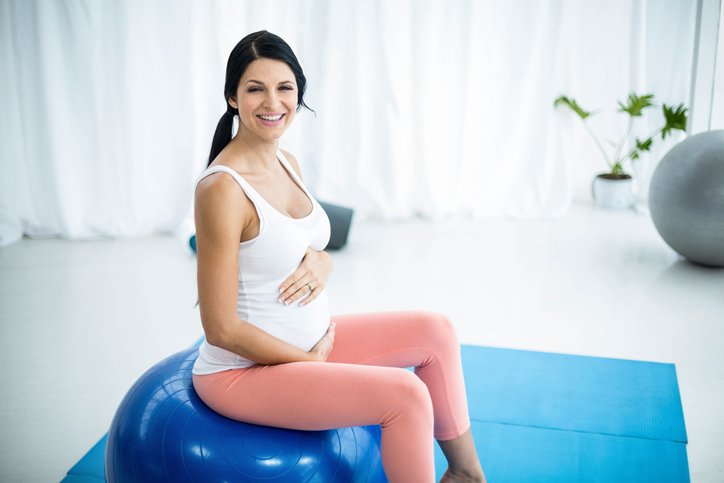There I was… in the hospital, hours away from giving birth to my first baby. The nurse noticed my son’s heart rate kept slowing and was slightly concerned. She gave me an oxygen mask, which seemed to help. Then (finally!) it was time for me to push, but after about 45 minutes, my baby’s heart rate slowed way down again. This time folks were more than a little concerned. The doctor decided to use forceps to get the baby out as fast as possible.
My son was born healthy. But as a result of the forceps, he developed a big bump on his head called a cephalohematoma. The doctor assured me that this was nothing to worry about. He said in time, the bump would go away on it’s own.
When You Notice Your Baby’s Not “Perfect”
True enough, after about 2 months, the lump was almost completely gone. But I noticed my son’s head still looked quite misshapen. I’d assumed it would look better once the bump was gone, but now I wasn’t so sure. And I was a little worried.
We went to his 2-month appointment and the pediatrician said our son had plagiocephaly, also known as flat head syndrome. He suspected it was the result of torticollis, a condition in which the head turns more to one side than the other. Although it wasn’t a severe case, he still referred us to a physical therapist to prevent it from getting worse.
Two weeks later we had our first appointment with the physical therapist. Because I’d wanted to convince myself that there was nothing wrong, I expected to show up, let them inspect him, then have them tell us, “It’s not so bad. No need to worry.” However, this wasn’t the case.
The physical therapist measured his head and told us it was bad enough that our son may need to get a helmet. Not what I was expecting. He also showed us different stretches to do to help my son gain full range of motion with his neck to treat the torticollis. This in turn would help his head even out.
I left feeling frustrated and disappointed. It was difficult to accept that my son was not “perfect”. Although the flat head and torticollis could have been caused by a variety of things beyond my control, such as positioning in the womb or the use of forceps, I still felt like a failure. Enter the mom guilt. I’d let my son spend large amounts of time lying in his Rock ‘n Play and sleeping in his car seat, which both likely contributed to his flat head syndrome.
Treating Flat Head Syndrome At Home
At this point it was too late for me to prevent flat head, but I still had the power to do everything I could to fix it. Immediately I put away the Rock ‘n Play and was careful about the amount of time I let my son spend in his car seat. I did all the stretches the physical therapist had taught me to do with my son. I increased the amount of time he spent on his tummy. If he was sleeping on the wrong side, I would try to turn him (without waking him up, of course). I even put a little mirror on one side of his crib to encourage him to turn his head to his weak side.
Over the next few months, we continued to see the physical therapist and kept doing what he told us. Although my son’s torticollis improved a lot, his head asymmetry only improved a little bit. But it had improved to the point where it was no longer absolutely necessary that he needed a helmet. This was great news!
Despite the small improvement, the physical therapist suggested we consider getting a helmet anyways. While it was likely the flat head would fix itself over time, there was a small possibility that it wouldn’t.
Making A Tough Choice
We had a tough choice to make. My husband and I thought a lot about what we wanted to do. A decision needed to be made by the time my son was six months old, because waiting longer could decrease the effectiveness of the helmet. We researched the pros and cons of helmets, and considered the financial aspects as well. We were leaning towards not getting a helmet, but we were afraid of making the wrong decision and being responsible for our child having a misshapen head the rest of his life.
In the end, we decided against the helmet and instead would let our son’s head shape correct on its own. I believe that this was the best choice for us. My son is now more than a year old and his head shape has improved greatly.
While this was the best decision for us, it definitely doesn’t mean that it’s the best decision for everyone. If you have a child with flat head syndrome, the most important thing is to make sure you’re doing what’s best for your individual child. Do all that you can to treat it from home, consult with your pediatrician, and do your research.
If you do decide to get your baby a helmet, it’s not the end of the world. I learned that most babies adapt easily to the helmet and don’t mind wearing it. We were lucky enough to be able to treat the issue by following our physical therapist’s instructions, and by letting our son’s head shape correct gradually over time. I’m happy to say, he’s looking pretty good these days.











